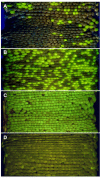A Maize Male Gametophyte-Specific Gene Encodes ZmLARP6c1, a Potential RNA-Binding Protein Required for Competitive Pollen Tube Growth
- PMID: 33719310
- PMCID: PMC7947365
- DOI: 10.3389/fpls.2021.635244
A Maize Male Gametophyte-Specific Gene Encodes ZmLARP6c1, a Potential RNA-Binding Protein Required for Competitive Pollen Tube Growth
Abstract
Members of the La-related protein family (LARPs) contain a conserved La module, which has been associated with RNA-binding activity. Expression of the maize gene GRMZM2G323499/Zm00001d018613, a member of the LARP family, is highly specific to pollen, based on both transcriptomic and proteomic assays. This suggests a pollen-specific RNA regulatory function for the protein, designated ZmLARP6c1 based on sequence similarity to the LARP6 subfamily in Arabidopsis. To test this hypothesis, a Ds-GFP transposable element insertion in the ZmLarp6c1 gene (tdsgR82C05) was obtained from the Dooner/Du mutant collection. Sequencing confirmed that the Ds-GFP insertion is in an exon, and thus likely interferes with ZmLARP6c1 function. Tracking inheritance of the insertion via its endosperm-expressed GFP indicated that the mutation was associated with reduced transmission from a heterozygous plant when crossed as a male (ranging from 0.5 to 26.5% transmission), but not as a female. Furthermore, this transmission defect was significantly alleviated when less pollen was applied to the silk, reducing competition between mutant and wild-type pollen. Pollen grain diameter measurements and nuclei counts showed no significant differences between wild-type and mutant pollen. However, in vitro, mutant pollen tubes were significantly shorter than those from sibling wild-type plants, and also displayed altered germination dynamics. These results are consistent with the idea that ZmLARP6c1 provides an important regulatory function during the highly competitive progamic phase of male gametophyte development following arrival of the pollen grain on the silk. The conditional, competitive nature of the Zmlarp6c1::Ds male sterility phenotype (i.e., reduced ability to produce progeny seed) points toward new possibilities for genetic control of parentage in crop production.
Keywords: RNA-binding protein; ZmLARP6c1; maize; pollen competition; pollen germination; pollen tube growth.
Copyright © 2021 Zhou, Vejlupkova, Warman and Fowler.
Conflict of interest statement
The authors declare that the research was conducted in the absence of any commercial or financial relationships that could be construed as a potential conflict of interest.
Figures






Similar articles
-
Genome-wide investigation of the LARP gene family: focus on functional identification and transcriptome profiling of ZmLARP6c1 in maize pollen.BMC Plant Biol. 2024 Apr 29;24(1):348. doi: 10.1186/s12870-024-05054-z. BMC Plant Biol. 2024. PMID: 38684961 Free PMC article.
-
AtTMEM18 plays important roles in pollen tube and vegetative growth in Arabidopsis.J Integr Plant Biol. 2016 Jul;58(7):679-92. doi: 10.1111/jipb.12459. Epub 2016 Feb 23. J Integr Plant Biol. 2016. PMID: 26699939 Free PMC article.
-
High expression in maize pollen correlates with genetic contributions to pollen fitness as well as with coordinated transcription from neighboring transposable elements.PLoS Genet. 2020 Apr 1;16(4):e1008462. doi: 10.1371/journal.pgen.1008462. eCollection 2020 Apr. PLoS Genet. 2020. PMID: 32236090 Free PMC article.
-
Using maize as a model to study pollen tube growth and guidance, cross-incompatibility and sperm delivery in grasses.Ann Bot. 2011 Sep;108(4):727-37. doi: 10.1093/aob/mcr017. Epub 2011 Feb 23. Ann Bot. 2011. PMID: 21345919 Free PMC article. Review.
-
Molecular Basis of Pollen Germination in Cereals.Trends Plant Sci. 2019 Dec;24(12):1126-1136. doi: 10.1016/j.tplants.2019.08.005. Epub 2019 Oct 11. Trends Plant Sci. 2019. PMID: 31610991 Review.
Cited by
-
Genome-wide investigation of the LARP gene family: focus on functional identification and transcriptome profiling of ZmLARP6c1 in maize pollen.BMC Plant Biol. 2024 Apr 29;24(1):348. doi: 10.1186/s12870-024-05054-z. BMC Plant Biol. 2024. PMID: 38684961 Free PMC article.
References
LinkOut - more resources
Full Text Sources
Other Literature Sources

